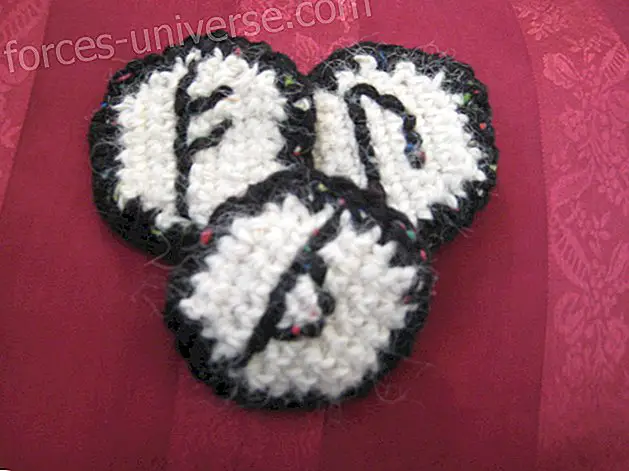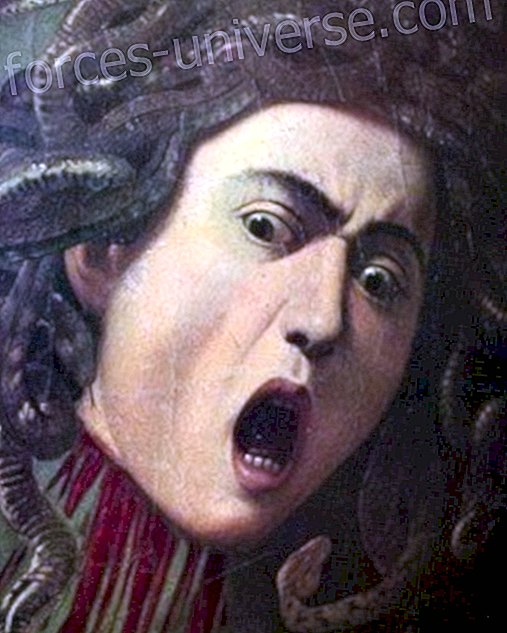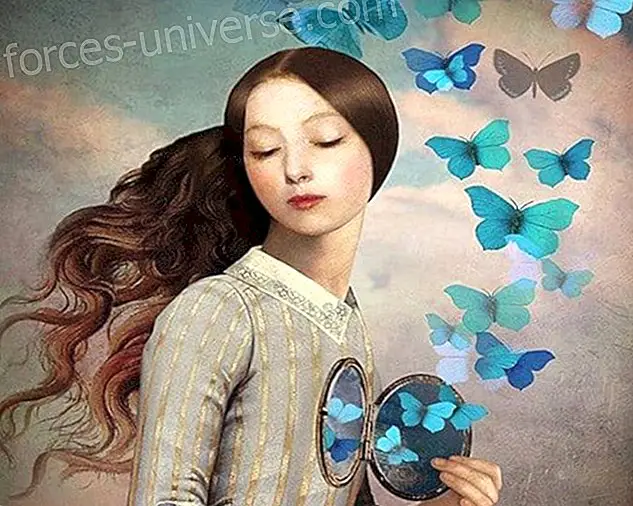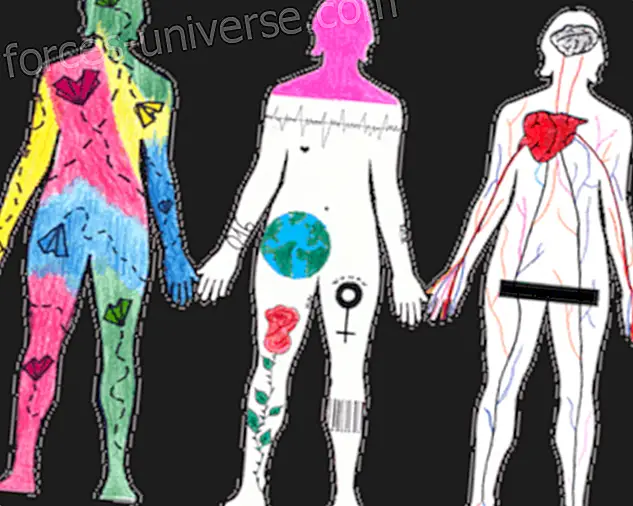Hildegarda de Bingen, the healer who used herbal remedies during medieval times
- 2017

Hildegarda de Bingen (1098-1179) called the most accomplished abbess of the middle ages, the Sibyl of the Rhine, the first German medical woman, mother of German botany, a woman of great energy and remarkable achievement. Poet, prophet, mystic, composer, moralist, counselor of kings and church leaders, author, scholar, scientist and herbalist, today she is best known for her visionary religious and philosophical works, as well as for her music. During her life, Hildegarda was also acclaimed as a healer.
Hildegarda was born near Mainz, tenth daughter of a noble family. Promised to the church by her parents, the instruction began at the age of eight with Jutta de Spanheim, who later became abbess of the Benedictine convent in Disibodenberg. He took his vows at eleven and succeeded Jutta as abbess in her death in 1136. Five years later, Hildegarda began publishing the visions he had experienced since childhood and believed he came directly from God. In 1150, he moved his monastery to Rupertsberg, near Bingen, and continued writing about his visions and his interpretations.
Hildegarda wrote his two treatises on medicine and natural history, known in English as the Book of Simple Medicine and the Book of Composite Medicine, between 1151 and 1161. (In some manuscripts the two are combined as The Subtleties of the Different Nature of Things created ). They often refer to their Latin titles, Physica (Natural History) and Causae et Curae (Causes and Remedies), respectively. By the amount of handwritten copies of these works made, and still in existence, it indicates that these works were widely read and influential.
Physica is an encyclopedic work that describes the characteristics of the elements, mammals, reptiles, fish, birds, trees, plants, metals, precious stones and jewels. The longest and most complete section contains information on medicinal uses and harvest of more than 200 herbs and other plants. Unlike many other medieval herbs, this work contains little description of the plants for identification purposes.
Causae et Curae catalogs forty-seven diseases according to causes, symptoms and treatments. Hildegarda named more than 300 plants here, emphasizing medical and physiological theory, as well as herbal treatments. 
The sources of Hildegarda are not known, but it is likely that she used medieval herbs and ancient texts of Pliny, Galen, Sorano and San Isidoro of Seville, increasing the published information on diseases and treatments with local folklore and medical wisdom, as well as the observation and experimentation The Rupertsberg monastery had a large herb garden, with which drugs were prepared to treat members of his order, as well as the surrounding people. Hildegarda knew these plants both by their Latin botanical names and by their common names in German. If she really practiced medicine or just studied it, it is not certain, but she was known for her cures, both supernatural and natural.
For Hildegarda, physical events, moral truths and spiritual experiences were equally important. Healing was medical and miraculous, and God's will was an important element in his remedies. "These remedies come from God and will heal people or they must die, because God does not want them to be healed, " he wrote.
Like other medieval healers, Hildegarda adopted from the ancient world the concept that the world is composed of four elements: fire, air, water and earth, and that these are represented in the human body by the four cardinal moods: yellow bile, blood, phlegm and melancholy (black bile). The harmony between these elements resulted in good health; disharmony or imbalance meant diseases. As Hildegarda pointed out, “as long as the flow of moods in a person works properly and maintains heat, humidity, blood and meat, then the person will be in good health. But as soon as they flow excessively and without precaution, they will create disease and cause death. ”
 Medieval monastic healers watched and studied plants to heal. It was believed that each plant was hot, cold, moist or dry, and these attributes determined its suitability as a treatment for a given disease. Of the athanasia, for example, Hildegarda wrote: is hot and a little wet and is good against all superfluous and fluid moods. And anyone who suffers from a cold and has a cough, who eats atanasia, or in cakes or with meat or, in any other way. Treat the moods so that they do not overflow and therefore decrease . Hildegard also recommended atanasia for a dry cough and stomach discomfort.
Medieval monastic healers watched and studied plants to heal. It was believed that each plant was hot, cold, moist or dry, and these attributes determined its suitability as a treatment for a given disease. Of the athanasia, for example, Hildegarda wrote: is hot and a little wet and is good against all superfluous and fluid moods. And anyone who suffers from a cold and has a cough, who eats atanasia, or in cakes or with meat or, in any other way. Treat the moods so that they do not overflow and therefore decrease . Hildegard also recommended atanasia for a dry cough and stomach discomfort.
Medicinal herbs were often prepared from a single herb. This was called simple . Complex diseases may have required a number of herbs, even those with seemingly opposite attributes, such as hot and cold or wet and dry. Thus, Hildegarda's cure for migraine was a mixture of aloe (hot), myrrh (dry), and poppy oil (cold) mixed with flour. (It is believed that Hildegarda's own migrations have been the source of her visions, which she recorded in detail and illustrated.)
A principle in the works of Hildegarda is viriditas, usually translated as verdor or power green and interpreted as a meaning of growth or life. Hildegarda wrote that God transmits life to plants, animals and gems. People eat plants and animals and acquire gems, thus obtaining viridites. They, in turn, give that life by practicing virtue, becoming an important link in the chain of being. He considered the emerald the chief of the jewels for his green color, and one of his favorite herbs was fennel, which in ancient rites was used to honor Adonis, the Greek god of vegetation.
By eating fennel seeds daily with an empty stomach, they reduce mucus and all rot, and remove halitosis and clear your eyes. Whoever eats fried meat or fish, or anything else fried, and suffers discomfort should eat fennel seeds and have less pain, he said.
Fennel, which is still eaten today as a digestive aid, was also used by Hildegarda in combination with other herbs to treat respiratory ailments. Those who cough should take fennel and dill in equal parts, add a third of a part of brown and boil the herbs in wine; strain through a linen cloth, drink it and the cough will disappear. ” A liquid made from equal amounts of mullein and fennel in wine would cure laryngitis.
For Hildegard, bright eyes were a sign of life, eyes muted, of death. He is credited with introducing the use of euphrasia (euphrasia officinalis) as a remedy for the eyes; Since then it is known as astringent and anti-inflammatory. Medieval herbal remedies for eye problems sometimes depended on eye color, which also determined personality traits. Fennel was a remedy for blue eyes that were afflicted. Rue was the herb of choice for brown eyes when they hurt :, said “drink the juice of rue, and double pure liquid honey, and add some pure wine; also, put a piece of wheat bread in this mixture, and then place it over the eyes with the bread overnight. ” 
Herbs often had powers beyond simple symptomatic relief of irritations. Of lavender for example, he said: “Whoever cooks lavender with wine, or if the person does not have wine, with honey and water, and the baby is often warm, will relieve the pain in the liver, lungs and chest with steam. . Lavender wine will provide the person with pure knowledge and a clear understanding. ”
Hildegarda, who was surprisingly modern in delving into dreams and psychology, recommended herbs to alter dream patterns. For disease-induced dreams, she wrote: "Whoever is plagued by erroneous dreams should have betonic sheets nearby when he goes to sleep and this person will see and feel less bad dreams."
A woman of her time sometimes combined ordinary herbal medicine with magical procedures, rituals or enchantments, some of which showed a Christian influence. She believed that the mandrake root was composed of the land from which Adam was created. A sad man could obtain a mandrake root that had been purified in a fountain for a day and a night immediately after being excavated from the earth. He would take the root at bedtime, warm it next to his body, and recite these words: “God, who brought man out of the dust of the earth without pain, now I put next to me that land that has never transgressed in order for my Clay can feel that peace as you created it. ” To counteract bad magic, one plucked the roots and leaves of a geranium, two mauve plants and seven shoots of the plantagenet grass at noon in mid-April. The plants were deposited in moist soil and kept moist and green for a while, then allowed to dry until the third hour of the rising sun. They were sprayed with water until noon, then removed and placed south in full sun until the ninth hour. They were wrapped in a cloth with a stick on top to keep them in place and left until a little before midnight, when the evils of darkness began to flee. The plants were moved to a high window or to a garden where fresh air could flow around them, then they were sprayed with the middle finger and placed in a new pillbox. This powder could be used to conjure magic by holding the wine, which was then drunk with saffron. This ritual illustrates the importance of the sun, the moon and the air in the world of Hildegarda.
The use of herbs, diet and natural remedies of Hildegarda to achieve health, resembles today's holistic approaches, and she prescribed small doses, prefiguring those of homeopathic medicine. In his medical works, as well as in some of his other writings, he deals with diabetes, gynecological and obstetric concerns and the psychological causes of the disease. 
While most people today see Hildegarda's medicine as folkloric, some take their theories seriously. Dr. Gottfried Hertzka from Germany has practiced "Hildegard medicine" for thirty years, using Causae et Curae as his guide. In the 1980s, he joined Dr. Wighard Strehlow, a research chemist, at the Santa Hildegarda Center on Richenau Island on Lake Constance. In 1993, he transferred his practice to the Hildegarda House in Allensbach, a small town in southern Germany. Diet, diagnosis, and herbal remedies based on Hildegarda's writings are available there.
Author and translation: Laura Gamboa-Cavazos, editor of the great family of hermandadblanca.org
Flanagan, Sabina. (1989) Hildegard of Bingen, 1098-1179: A Visionary Life. New York: Routledge.
Fox, Matthew. (1985) The Illuminations of Hildegard of Bingen. Santa Fe, New Mexico: Bear and Company.
Strehlow, Wighard, and Gottfried Hertzka. (1987) Hildegard of Bingen's Medicine. Santa Fe, New Mexico: Bear and Company.

 Medieval monastic healers watched and studied plants to heal. It was believed that each plant was hot, cold, moist or dry, and these attributes determined its suitability as a treatment for a given disease. Of the athanasia, for example, Hildegarda wrote: is hot and a little wet and is good against all superfluous and fluid moods. And anyone who suffers from a cold and has a cough, who eats atanasia, or in cakes or with meat or, in any other way. Treat the moods so that they do not overflow and therefore decrease . Hildegard also recommended atanasia for a dry cough and stomach discomfort.
Medieval monastic healers watched and studied plants to heal. It was believed that each plant was hot, cold, moist or dry, and these attributes determined its suitability as a treatment for a given disease. Of the athanasia, for example, Hildegarda wrote: is hot and a little wet and is good against all superfluous and fluid moods. And anyone who suffers from a cold and has a cough, who eats atanasia, or in cakes or with meat or, in any other way. Treat the moods so that they do not overflow and therefore decrease . Hildegard also recommended atanasia for a dry cough and stomach discomfort. 




